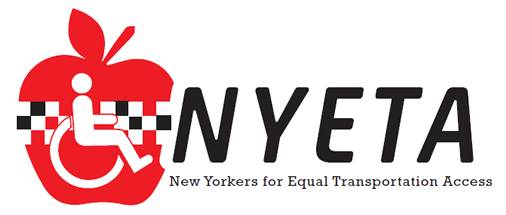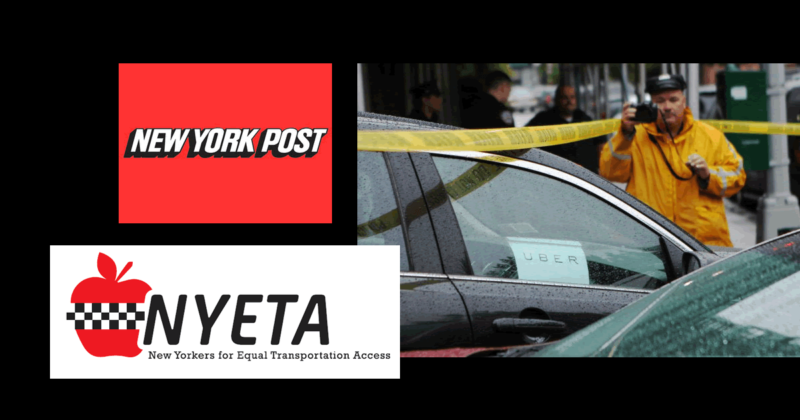From The New York Post:
As the number of people using for-hire car services like Uber has increased in New York, so, too, has the number of accidents.
Crashes involving the for-hire vehicles have more than tripled over the past two years — from 534 in July 2014 to 1,672 in June 2016.
Records obtained by The Post showed the frightening leap, which is the only major jump in numbers involving TLC-licensed automobiles during that same period.
There were five fatal crashes involving black car drivers between May and June of this year — just two less than all of 2015.
In comparison, there have been no yellow taxis involved in accidents that resulted in a fatality so far in 2016. The number of yellow cab drivers involved in crashes has actually gone down over the years — with 1,168 unfolding in July 2014, 1,118 in July 2015 and 1,054 in June 2016.
Since January, black cars have been involved in a total of 9,062 crashes, which is 4,273 more than what was recorded during the same time span in 2015.
The increase in fender-benders in that lone sector has ultimately boosted overall crashes per month from 2,835 in July 2014 to 3,814 in June 2016.
It comes at a time when drivers often work for multiple driving services such as Uber, Lyft and Juno — and may have more than one cellphone or tablet in their cars, taking their focus off the road.
“The devices can be quite distracting,” said Nancy Soria, vice president of Green Taxis of New York. “On Twitter, a passenger said her driver was watching a movie. Some of them do things like that. Some of them work for Uber and Lyft and other companies. They are constantly in between.”
The TLC notes that the increase in crashes is in line with the increase in for-hire cars on the road over that same period.
They added that the data not only encompass the number of drivers who may have had a causal role in a crash, but also ones who were either victims or innocent participants.
Some of the accidents are as minor as a parked black car’s mirror getting clipped by a passing vehicle, the agency said.
Still, taxi industry officials are pouncing — saying this is because the black cars have far less regulation.
“There is highly uneven enforcement on the street that skews heavily against yellow cabbies due to their high visibility and away from black cars which blend into the streetscape and are often impossible to differentiate from passenger cars at a distance,” said Michael Woloz, who represents the Metropolitan Taxicab Board of Trade, the largest taxi trade association in the city.
“This uneven regulation results in more dangerous drivers gravitating to the less regulated black car app companies where drivers know they will not receive as many summonses and will be allowed to operate even if their license is suspended,” he explained. “Put it all together and you have a recipe for more crashes and more dangerous streets.”
Soria said she feels like lack of experience also plays a role.
“These newbies only came for the dreams, they aren’t professional drivers,” she seethed. “They are promising money instant for them to get in. I’ve seen a lot of terrible black car drivers. They disregard stop signs, run past me and don’t use their turn signals.”
And passengers seem to agree — saying they are sick and tired of having to deal with distracted drivers who are constantly fiddling with their makeshift mobile command centers.
“I have experienced drivers focusing more on 10 screens than my safety,” fumed Lindsay O’Brien, a 25-year-old waitress from Midtown. “I think it’s ridiculous. It’s not normal for drivers to text, call, or touch a gadget in the corner of the car. I see even police officers do it. The drivers aren’t paying attention or don’t give a crap.”
Michael Vier, a 32-year-old law clerk from Manhattan, said he thinks black car companies should enforce more rules about the electronics.
“Uber and other services should implement better training, practices, and standards for their drivers,” he said. “There should be zero tolerance for using [gadgets] while driving. I would switch to a service that had those types of policies.”
Soria believes the underlying problem, though, is the city’s eagerness to catapult the black car industry after Uber and Lyft became financial successes in recent years.
“The city should have put a cap on the growing number of black cars,” she said. “It just keeps growing and growing. The TLC is giving out tons of plates a day and they are all going to black cars. Congestion is at its worst. They need to figure something out. I think this is out of control. It’s the Wild Wild West out there and the TLC is turning the other way and not doing anything about it.”
Read more from The New York Post…


Recent Comments